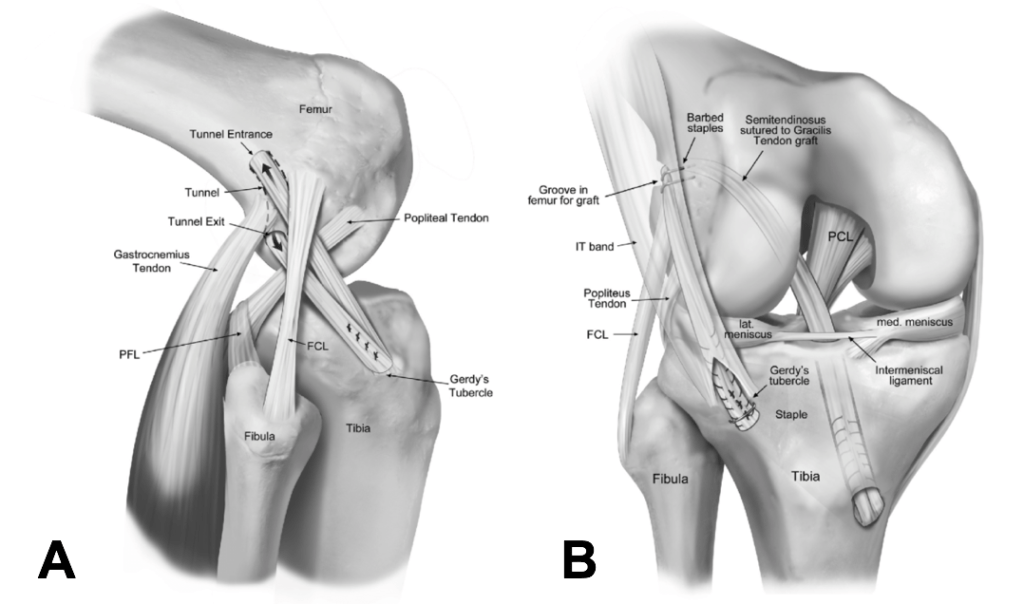ACL injuries are common among athletes as well as those who play sports. The ACL is a major ligament in the knee that provides stability and supports actions like pivoting, hopping, and sudden change in direction. Unfortunately, due to its poor healing potential, ACL reconstruction or surgery is often necessary in order to regain knee function after the tear.
You can make informed decisions if you have an ACL injury.

Image credit: jeremyburnhammd.com
The role of the ACL and Why Reconstruction is Sometimes Required
The ACL is the ligament that connects the tibia to the femur. It plays a significant role in stabilizing the knee while you move. If the ACL is injured, be it caused by a sudden twist or landing awkwardly, or intense sports, the knee’s stability is greatly impaired. ACL tears can result in discomfort and swelling. They may also cause you feel that your knee “gives out” while you’re in a high-intensity.
ACL injuries do not heal themselves although they might recover with rehabilitation or rest in certain instances, surgery is usually the most effective option. ACL surgery is the process of either reconstructing the ACL with a graft or repairing it in a few circumstances.
What is ACL Reconstruction Surgery
ACL reconstruction refers to the replacement of the ruptured ACL with an graft. The graft may come directly from the patient (autograft) or can be obtained from an organ donor. The quadriceps tendons and the patellar (BTB), are among the most frequently used grafts. Each graft comes with their own distinct benefits.
Quadriceps Tendon It is known for its tough strength and no donor site complications, this graft offers reliable stability particularly for athletes who are returning to sports that require high impact.
Patellar Tendon BTB (BTB) is often referred to as the “gold standard”, this graft can provide the highest level of stability to patients who need it.
Dr. Burnham, a fellowship-trained ACL Surgeon, has conducted extensive research on these graft options, showing excellent outcomes in terms of knee stability, durability, and minimal long-term complications.
Advancements in ACL Reconstruction Techniques
ACL reconstructions have historically been performed with the ACL graft in an not-anatomic area, which means that it was not aligned with the original ACL’s natural position. This could lead to inadequate results, like less stability and an increased chance of re-injury. Modern advances in imaging technology and surgical research have changed how ACL reconstruction is carried out.
ACL surgeons, such as Dr. Burnham today, use advanced methods to place the new ACL in the exact same location where the original ACL was previously. The position is anatomically accurate and aligns with the knee’s natural mechanics. This improves function as well as stability. The benefits of this precision include:
Risk reduction for injuries
Better long-term knee health
Greater chance of avoiding developing arthritis
How to Measure Graft Size with precision
ACL reconstruction’s success depends on the proper size of the ACL graft. By using MRI images and direct surgical observation, surgeons can adjust the graft in accordance with the individual’s anatomy. A graft which is too small could not offer enough stability, while an oversized graft can lead to complications. ACL surgeons customize the procedure for each patient to optimize the healing process and functionality.
Why should you choose a fellowship-trained ACL Surgeon?
Your surgeon’s experience is important to your ACL operation. Fellow-trained ACL surgeons, like Dr. Burnham, have specialized knowledge and expertise in dealing with knee injuries that are complex. They’re equipped with the latest surgical techniques and can offer individualized care to every patient, which results in better outcomes.
Long-Term and Recovery Benefits
When they have a proper treatment plan, patients who’ve had ACL reconstruction can return to their regular activity level gradually. Physical therapy is an essential component of rehabilitation. It can help strengthen surrounding muscles, and restore range-of-motion.
ACL surgery has improved the long-term outcomes of patients as they experience lower rates of the re-injury and improved knee stability. If you’re an athlete looking for a return to play or someone who wants to return to an active lifestyle, contemporary ACL reconstruction techniques offer an opportunity to find relief that lasts.
Final Thoughts
ACL reconstructions have made a stride, way thanks to the latest technology, research and experience of fellowship trained ACL surgeons such as Dr. Burnham. Modern surgical techniques emphasize precision, high-end imaging and individualized care to offer patients the best chances for an effective and long-term healing.
Contact with an ACL surgeon if you suffer from an ACL injury. They can help you through the various options to ensure the best result.